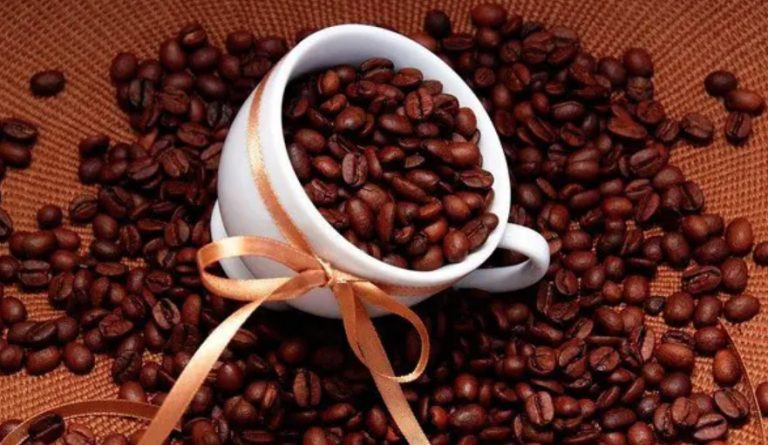Packaging

After roasting, the coffee is packaged. But how good are the coffee beans that we hold in our hands after buying them? Some information on the packaging can already give us initial indications of the quality of the coffee beans.
Aroma valve
Since coffee beans still release some gases after processing, they are packaged in aroma protection packaging with an aroma valve. The carbon dioxide can escape from the packaging through the aroma valve, but no oxygen from the outside can penetrate the packaging and affect the aromas.
Roast date
The best before date is important, but does not allow any conclusions to be drawn about the variety of aromas in the coffee. Because coffee has a very long shelf life. Even if the aroma of the coffee has evaporated, the coffee is not bad and can still be used. A roasting date provides more information about the presence of the aromas. This is not always specified.
However, if it is on the packaging, you can quickly see whether the coffee beans are fresh or stale. The roasting date should not be more than two months ago, otherwise even the best coffee will have lost most of its aroma. That’s why we refine our Coffee Perfect house roasts monthly so that we can always offer our customers fresh coffee beans.
Seal
If there are seals on the coffee packaging, the coffee usually comes from sustainable and organic cultivation. But what do FairTrade, organic seals or the Rainforest Alliance stand for? You can read about the requirements that must be met in order to receive one of the seals in our “Certifications” chapter. Since we are organically certified according to DE-ÖKO 039, we are allowed to sell products that bear the organic seal.
Seals are a good sign, since the quality itself is not evaluated, but better living conditions and organic cultivation definitely increase the quality. However, a lack of logos and seals does not have to be a bad sign. There are organizations that promote better coffee quality through voluntary action, but do not mark this with logos and seals.
Price
Quality costs. This is especially true for coffee. That’s why you shouldn’t choose your coffee based on the cheapest price, but based on quality and, above all, your own preferences.
100% Arabica
Actually only a table of contents, but many buyers perceive the statement “100% Arabica” as a sign of quality. Of course that’s not true. This information only indicates that no Robusta beans are included. An indication that says something more about the quality is the designation “highland coffee”. While “highland coffee” doesn’t necessarily have to be top quality, it does indicate that the beans have had more time to mature and the flavors have been able to develop better.
Whole bean
The best fully automatic coffee machine cannot conjure up tasty coffee from aromaless or inferior beans. It is therefore important to pay attention to the quality of the beans when buying and not to choose them for the cheapest price.
Uniformity
Even browning and size indicate good quality. The mixture should not contain burned or charred beans. However, Arabica-Robusta blends can contain coffee beans of different sizes, since Robusta beans are smaller than Arabica beans. With pure Arabica coffee, however, the beans should be roughly the same size.
Contents
Good quality contains only coffee beans. This means that there should be no remains of shells, branches or stones. If you still find such things in your coffee beans, you saved on sorting. Never use such types of coffee, as stones in particular can damage the grinder of fully automatic machines and coffee grinders.
Storage
In general, coffee should be consumed quickly after purchase and not left in the cupboard for weeks or months. Because coffee loses its aroma over time and can no longer develop its full potential. Proper storage can, however, slow down the loss of aroma, so that the coffee still tastes the same after two weeks as it did when the packaging was opened.
Only as needed
Coffee should never be bought in advance. Always only buy as much as you can use within the next few weeks – four to six weeks are ideal. If you grind the beans with a coffee grinder, you should also only grind as many beans as you need. Because whole beans can hold on to the aroma better than ground coffee.
Air and light tight
Light, oxygen and heat are coffee’s greatest enemies. It is therefore advisable to store coffee beans in a dark and airtight place. Since coffee quickly absorbs foreign odors, it should not be stored next to strong-smelling foods or perfumed items such as candles.
Cool and constant

It is also important that the coffee beans are stored cool and are not exposed to strong temperature fluctuations. It is therefore important to reseal the beans immediately after use and return them to their original storage location. Constant changes of location with different temperatures damage the aroma and impair the enjoyment of the coffee.
Original packaging
The original packaging is still the best packaging. If you want to be on the safe side, you can leave the beans in their original packaging and put them in an airtight and lightproof container. In this way, the important aroma is doubly protected.

